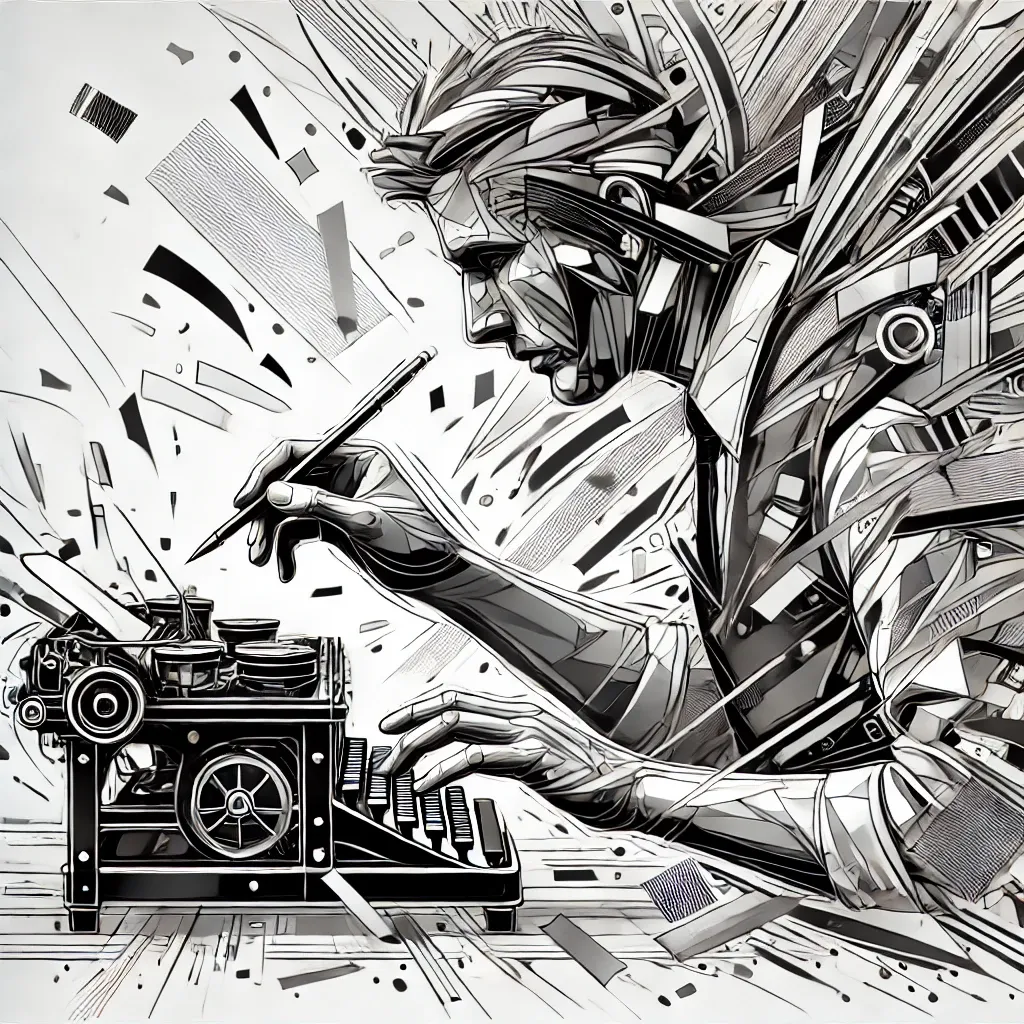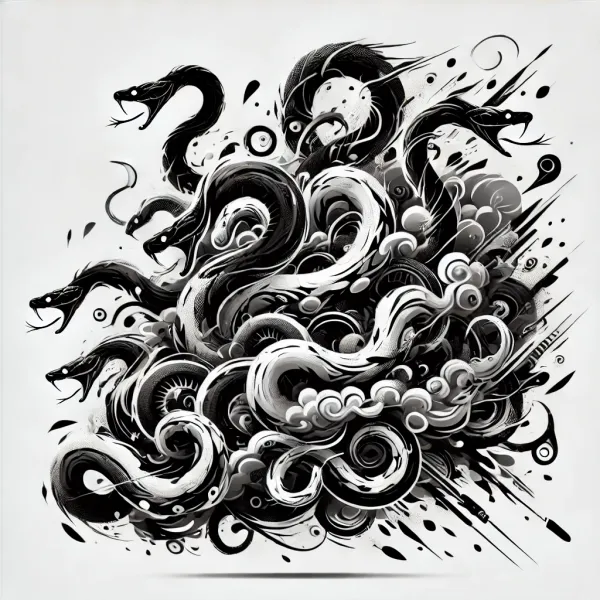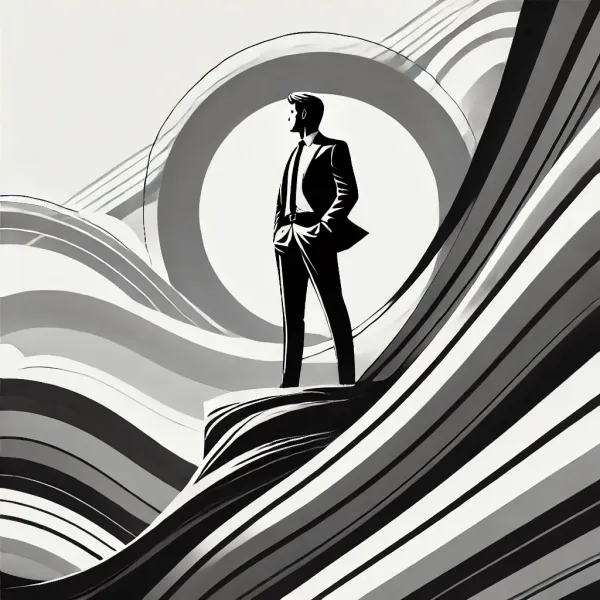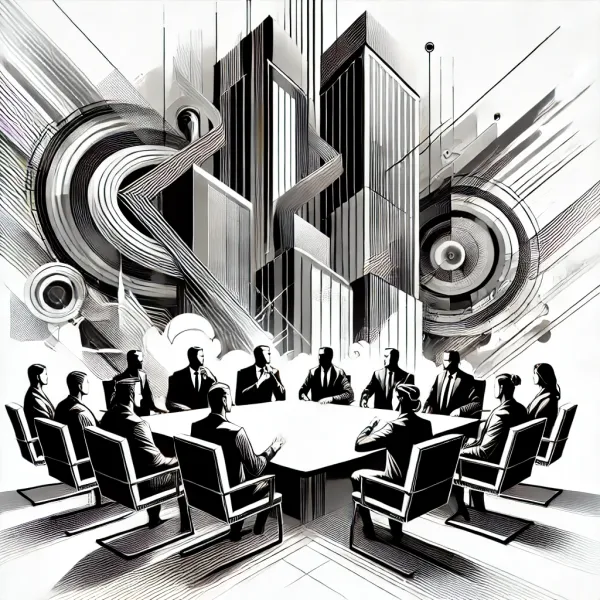The Ultimate List of Copywriting Frameworks Which You Can Start Using Today
You are writing all the time. To persuade, to inspire, to report, to teach. Make it powerful and impactful using copywriting frameworks.

We are talking about video content and all this AI and visual creation, however we write all the time. We write almost constantly:
- Messages
- Blog posts
- Scripts for videos
- Emails
- Landing pages
- Product descriptions
- Texts for presentations
- Reports
- and much more…
You may say:
“Ooh, don’t worry, I have ChatGPT (and Claude, and DeepSeek) to write the texts.”
Really?
AI cannot replace your brain and creativity. It can enhance and augment it for you, but you are the one who should guide it and be the driving force, the creative power behind AI efforts.
Even if you heavily use generative AI for your content, you still need to be able to give instructions and ask the right questions in order to get the desired results.
Whichever path you’ve taken - AI, no-AI - you will need to write for certain audiences and if you use some proven frameworks, you can make your life easier and/or help the AI to provide the perfect output with less revisions.
I have collected 35 copywriting frameworks. You can use them to structure your landing pages, make your LinkedIn posts catchier or convert the leads faster.
Bookmark this article as you are going to need it in the future, if. you write often. Yes, you will definitely need it.
Here are the top 35 copywriting frameworks which you can use right away:
PAS (Problem-Agitate-Solution)
- Problem: Identify a pain point your audience faces.
- Agitate: Amplify the problem emotionally.
- Solution: Present your product or service as the answer.
- Example:
- Problem: "Struggling to stay organized?"
- Agitate: "Missing deadlines and feeling overwhelmed?"
- Solution: "Try [Product]—your ultimate productivity tool!"
AIDA (Attention-Interest-Desire-Action)
- Attention: Grab attention with a bold statement or question.
- Interest: Build curiosity by highlighting a benefit.
- Desire: Create an emotional connection or desire for the solution.
- Action: End with a clear call-to-action.
- Example:
- Attention: "Want to double your productivity in 5 minutes?"
- Interest: "This simple hack works for busy professionals."
- Desire: "Imagine having more time for what matters most."
- Action: "Click here to learn how!"
FAB (Features-Advantages-Benefits)
- Features: Describe what your product/service does.
- Advantages: Explain how it stands out.
- Benefits: Highlight the emotional or practical payoff for the user.
- Example:
- Features: "Our app tracks your daily habits."
- Advantages: "It’s simple, fast, and works on all devices."
- Benefits: "Achieve your goals faster and feel more in control."
Before-After-Bridge (BAB)
- Before: Paint a picture of the current struggle.
- After: Show the transformation or ideal outcome.
- Bridge: Explain how your product/service makes it happen.
- Example:
- Before: "Tired of messy closets?"
- After: "Imagine a clutter-free, organized space."
- Bridge: "Our storage solutions make it easy—start today!"
4 C’s (Clear-Concise-Compelling-Credible)
- Clear: Be straightforward and easy to understand.
- Concise: Keep it short and to the point.
- Compelling: Use emotional or persuasive language.
- Credible: Add proof, testimonials, or data.
- Example:
- Clear: "Lose weight without dieting."
- Concise: "Our program takes just 10 minutes a day."
- Compelling: "Feel confident and energized in weeks."
- Credible: "Join 10,000+ happy customers who transformed their lives."
QUEST (Qualify-Understand-Educate-Stimulate-Transition)
- Qualify: Identify your target audience.
- Understand: Show empathy for their pain points.
- Educate: Teach them something valuable.
- Stimulate: Spark curiosity or desire.
- Transition: Guide them to the next step.
- Example:
- Qualify: "For busy entrepreneurs..."
- Understand: "We know how hard it is to find time for marketing."
- Educate: "Automation can save you 10+ hours a week."
- Stimulate: "Imagine what you could do with that extra time."
- Transition: "Start your free trial today!"
The Hook-Value-CTA Framework
- Hook: Start with a bold, intriguing statement or question.
- Value: Deliver a quick, actionable insight or benefit.
- CTA: End with a clear call-to-action.
- Example:
- Hook: "Stop wasting time on ineffective workouts!"
- Value: "This 20-minute routine burns more calories than an hour at the gym."
- CTA: "Click here to watch the video and try it now!"
The 4 P’s (Picture-Promise-Prove-Push)
- Picture: Paint a vivid image of the desired outcome.
- Promise: Make a bold promise or claim.
- Prove: Provide evidence or social proof to back it up.
- Push: Encourage immediate action.
- Example:
- Picture: "Imagine waking up to a perfectly clean home every day."
- Promise: "Our robot vacuum does all the work for you."
- Prove: "Rated 5 stars by 10,000+ happy customers."
- Push: "Order now and get 50% off!"
The 3 R’s (Relate-Reward-Response)
- Relate: Connect with your audience by addressing their pain points or desires.
- Reward: Highlight the benefit or transformation they’ll get.
- Response: Include a clear call-to-action.
- Example:
- Relate: "Struggling to keep up with your inbox?"
- Reward: "Our email tool helps you save 2 hours a day."
- Response: "Try it free for 7 days!"
The STAR Framework (Situation-Task-Action-Result)
- Situation: Set the scene or context.
- Task: Describe the challenge or goal.
- Action: Explain what was done to solve it.
- Result: Share the outcome or success.
- Example:
- Situation: "Running a small business is tough."
- Task: "You need to save time and money on marketing."
- Action: "Our tool automates your social media posts."
- Result: "Grow your audience 3x faster with half the effort!"
The 5 W’s and 1 H (Who-What-When-Where-Why-How)
- Who: Identify your target audience.
- What: Describe your product or service.
- When: Highlight timing or urgency.
- Where: Mention availability or location.
- Why: Explain the benefits or purpose.
- How: Show how it works or how to get it.
- Example:
- Who: "Busy moms..."
- What: "Need a quick, healthy meal solution?"
- When: "Available now..."
- Where: "Delivered straight to your door."
- Why: "Save time and eat better."
- How: "Order in 2 minutes—start today!"
The “So What?” Framework
- Start with a statement, then repeatedly ask “So what?” to dig deeper into the value or benefit.
- Example:
- "Our app tracks your daily habits."
- So what? "You’ll know exactly where your time goes."
- So what? "You can make better decisions and be more productive."
- So what? "You’ll achieve your goals faster and feel more in control."
- Final: "Download now and take charge of your day!"
The “What If” Framework
- What If: Pose a hypothetical scenario that sparks curiosity or desire.
- Then: Explain the transformation or solution.
- Now: Call to action.
- Example:
- What If: "What if you could double your sales in 30 days?"
- Then: "Our proven system helps you close deals faster."
- Now: "Book a free demo today!"
The “Problem-Solution-Benefit” Framework
- Problem: State the issue your audience faces.
- Solution: Introduce your product or service as the fix.
- Benefit: Highlight the positive outcome they’ll experience.
- Example:
- Problem: "Struggling to get enough sleep?"
- Solution: "Our sleep tracker helps you understand your patterns."
- Benefit: "Wake up refreshed and ready to conquer the day!"
The “Curiosity Gap” Framework
- Tease: Start with an intriguing statement or question.
- Gap: Create curiosity by withholding key information.
- Resolve: Reveal the answer or solution, often with a CTA.
- Example:
- Tease: "This one habit can boost your productivity by 50%."
- Gap: "But most people don’t even know about it."
- Resolve: "Click here to learn the secret!"
The “Features to Benefits” Framework
- Start with a feature of your product/service, then translate it into a tangible or emotional benefit.
- Example:
- Feature: "Our shoes are made with breathable fabric."
- Benefit: "Stay comfortable all day, no matter how much you’re on your feet."
The “Hero’s Journey” Framework
- Setup: Introduce the audience as the hero facing a challenge.
- Conflict: Highlight the struggle or pain point.
- Resolution: Present your product/service as the guide or solution.
- Transformation: Show the positive outcome or transformation.
- Example:
- Setup: "You’re working hard but not seeing results."
- Conflict: "Frustrated by wasted time and effort?"
- Resolution: "Our tool streamlines your workflow."
- Transformation: "Achieve your goals faster and stress-free!"
The “Rule of Three” Framework
- Use three points to make your message memorable and engaging.
- Example:
- "Save time. Save money. Save your sanity. Try [Product] today!"
The “Empathy-Offer-Action” Framework
- Empathy: Show you understand your audience’s pain.
- Offer: Present your solution.
- Action: End with a clear CTA.
- Example:
- Empathy: "We know how overwhelming meal planning can be."
- Offer: "Our app creates custom plans in minutes."
- Action: "Download now and eat stress-free!"
The “Contrast” Framework
- Highlight the difference between the current situation and the desired outcome.
- Example:
- "Tired of clunky, outdated software? Switch to [Product]—sleek, fast, and easy to use."
The “Testimonial-Driven” Framework
- Use a customer’s story or quote to build trust and credibility.
- Example:
- "‘This app changed my life! I went from 0 to 10K followers in 3 months.’ — [Customer]. Ready to grow? Start your free trial today!"
The “Question-Answer” Framework
- Pose a question your audience is asking, then provide the answer.
- Example:
- "How do you stay productive with a busy schedule? Our planner helps you focus on what matters most. Get yours now!"
The “Listicle” Framework
- Use a numbered list to break down tips, benefits, or features.
- Example:
- "3 ways to boost your energy: 1) Drink more water. 2) Take short breaks. 3) Try our energy-boosting supplement. Shop now!"
The “Scarcity-Urgency” Framework
- Create urgency by highlighting limited availability or time.
- Example:
- "Only 10 spots left! Join our exclusive workshop and transform your business today."
The “Storytelling” Framework
- Use a mini-story to engage your audience emotionally.
- Example:
- "Sarah was overwhelmed with work until she discovered [Product]. Now, she’s more productive than ever. Start your journey today!"
The “How-To” Framework
- Teach your audience something valuable in a simple, actionable way.
- Example:
- "How to save $500 this month: 1) Cut unused subscriptions. 2) Cook at home. 3) Use our budgeting app. Download now!"
The “Shock and Awe” Framework
- Start with a surprising statistic or fact to grab attention.
- Example:
- "Did you know 80% of people fail to achieve their goals? Our system ensures you’re in the 20% who succeed. Learn more!"
The “Feel-Felt-Found” Framework
- Feel: Acknowledge how your audience feels.
- Felt: Share how others felt the same way.
- Found: Explain how they found relief with your solution.
- Example:
- "Feel overwhelmed by clutter? Others felt the same way—until they found our organizing system. Try it today!"
The “One-Liner Hook” Framework
- Use a single, powerful sentence to grab attention and spark curiosity.
- Example:
- "This $10 tool saved me 10 hours a week. Want to know how?"
The “Comparison” Framework
- Compare your product/service to a competitor or the status quo.
- Example:
- "Why spend hundreds of dollars on a gym membership when you can get the same results at home with our **20-dollar workout plan?"
The “Open Loop” Framework
- Start a story or idea but leave it unresolved to keep the audience engaged.
- Example:
- "I almost quit my job last year... until I discovered this one strategy. Want to know what it is?"
The “Social Proof” Framework
- Highlight the popularity or success of your product/service.
- Example:
- "Join 50,000+ people who’ve transformed their lives with [Product]. Are you next?"
The “Reverse Psychology” Framework
- Use a counterintuitive statement to pique curiosity.
- Example:
- "Stop trying to save money. Here’s how to make more instead."
The “Metaphor” Framework
- Use a metaphor to make your message more relatable and memorable.
- Example:
- "Your brain is like a muscle—train it with our app and watch it grow!"
The “Step-by-Step” Framework
- Break down a process into simple, actionable steps.
- Example:
- "3 steps to a better morning: 1) Wake up at the same time. 2) Drink water. 3) Use our guided meditation app. Start tomorrow!"
—
You don’t need to use all of them but this swipe file will accelerate your writing process, will improve its persuasive power and will save you tons of time staring at the blinking cursor.





